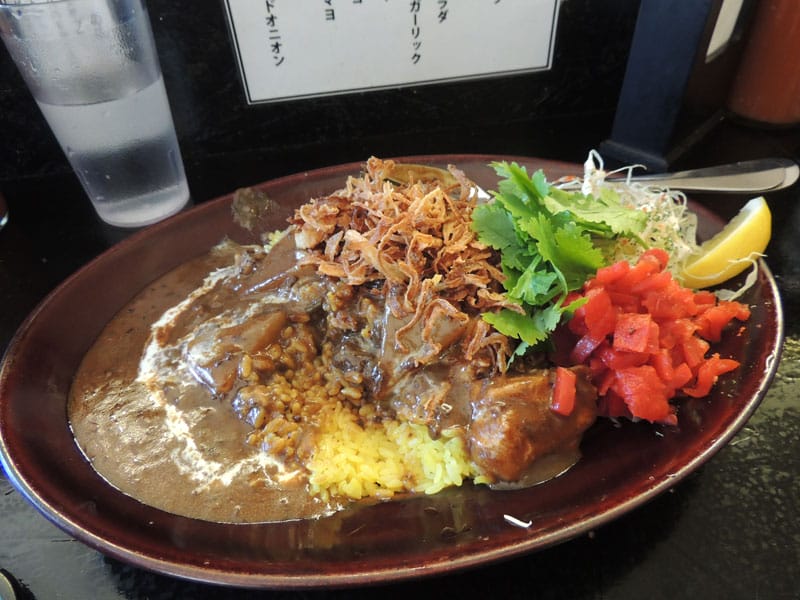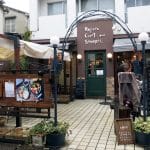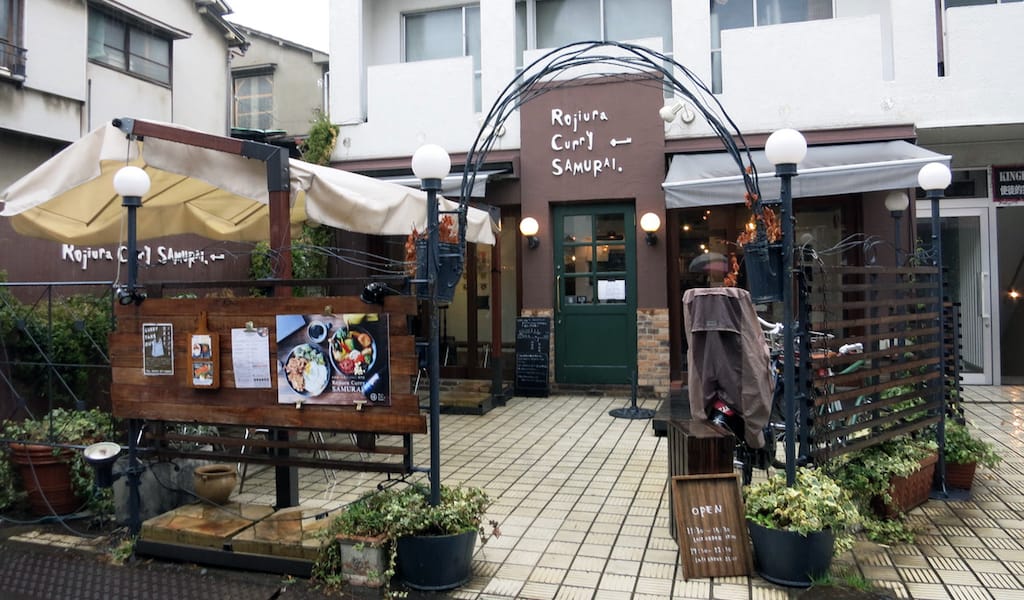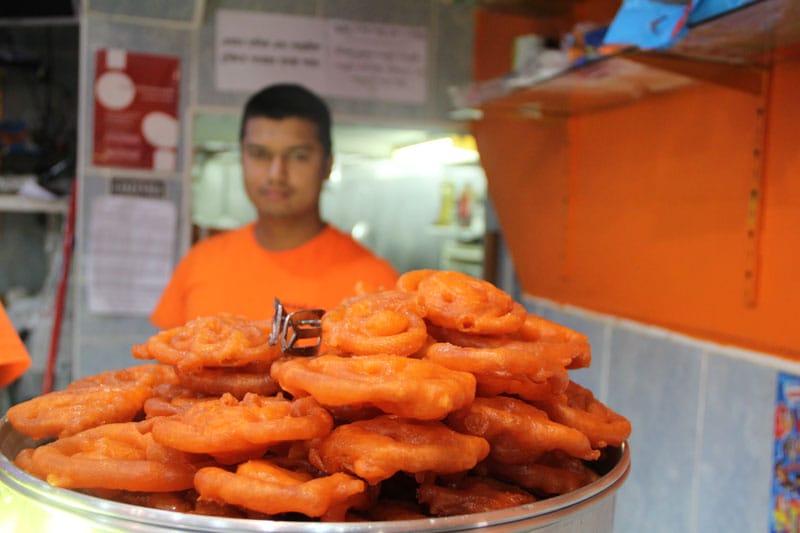There’s a general rule of thumb in Tokyo that if you see a line in front of a restaurant, it’s probably worth standing in. Maybe that’s how we first discovered Karē wa Nomimono. Or maybe it was the heady scent of fresh curry that wafts out the kitchen door before the restaurant opens every day. As many times as we’ve been back, it’s hard to remember.
The British Navy first introduced curry to Japan sometime at the end of the 19th century. Unlike its South and Southeast Asian counterparts, Japanese curry is thickened with roux and made from curry powder rather than blended spices. The result is a generally mild but hearty flavor with a thick and satisfying texture. Touted as a national dish since at least the mid-20th century, curry rice is for many Japanese the quintessential comfort food. While some shops pride themselves on making curry just like mom used to, others are taking the classic dish in bold new directions.

Karē wa Nomimono, which translates roughly to “Curry is a Drink,” splashed on to the scene in 2012 in Ikebukuro, though they’ve since opened a second location in Akihabara. They only serve two kinds of curry, red and black. The red is tomato based with chicken, and while it resembles a more Indian-style curry, the taste is somewhat reminiscent of an Italian stew. Bottles of both hot sauce and parmesan cheese placed on the counter suggest this convergence isn’t accidental. The more popular black curry (it obtains its dark shade from the spices used) hews closer to the traditional Japanese flavor profile, but won’t fail to surprise even the most seasoned curry hound.
Karē wa Nomimono is about quality and quantity, and enjoying the massive portions here is a practiced art.
Despite the limited menu, diners can visit the shop 100 times and never have the same meal twice. Each plate of curry served is fully customizable, as diners choose three toppings from a list of 10. These include traditional curry sides like Japanese shallots (#2), as well as much stranger pairings like tuna mayo (#7). On our most recent visit, we broke from our customary potato salad (#4) and corn mayo (#8) to try pickled vegetables (#3) and cilantro (#6). Our perennial favorite, fried onions (#10), rounded out our selection. The list of toppings is in Japanese only, and for the adventurous eater and non-native speaker, that can be part of the fun.

After a 15-minute wait, we were seated at the L-shaped counter, which can accommodate nine diners at a time. Within minutes of choosing our toppings, we were handed a heavy plate. Tender hunks of slow cooked pork and stewed daikon swam in the rich black curry, so thick it hardly penetrated the bed of saffron rice beneath. Karē wa Nomimono is about quality and quantity, and enjoying the massive portions here is a practiced art. Eyes wide and mouth watering, we deftly scooped warm bites of curry rice up from the plate. We missed the cool feel of the potato salad against the piping curry, but the flavorful tang of coriander and pickles was a piquant surprise.
At long last we slid off our stool and ambled sluggishly outside. Normally in such a state food would be the last thing on our mind, but we were already thinking about what new combination of toppings to try on our next visit. Perhaps we’ll have to give the newest addition to the list, fried garlic (#5), a try. Karē wa Nomimono opens at 11:30 a.m. for lunch and 5:00 p.m. for dinner, and closes when they run out of food. In our experience that doesn’t take long.
This story was originally published on May 18, 2016.
 August 8, 2018 Obento Express
August 8, 2018 Obento Express
Last February, we were at a Japanese pop-up dinner at Bina 37, Tbilisi’s wine cellar in […] Posted in Tbilisi June 1, 2018 Have It Your Way
June 1, 2018 Have It Your Way
The song “My Way” may be a staple of every karaoke bar in Japan but it’s also a fitting […] Posted in Tokyo March 9, 2016 Dhaka Restaurante
March 9, 2016 Dhaka Restaurante
Every late morning from the ground floor of a typical Lisbon building, the façade of […] Posted in Lisbon
Published on March 09, 2019
Related stories
August 8, 2018
TbilisiLast February, we were at a Japanese pop-up dinner at Bina 37, Tbilisi’s wine cellar in the sky, organized as a tribute to Georgian-Japanese friendship and to celebrate the champion Georgian Sumo wrestler, Tochinoshin (Levan Gorgadze), soon to be promoted to the rank of Ozeki, the second highest tier in the sport. Zura Natroshvili, the…
Explore the Kichijoji neighborhood on our Tokyo walk!
June 1, 2018
TokyoThe song “My Way” may be a staple of every karaoke bar in Japan but it’s also a fitting description for the Japanese fast food staple of “curry rice” as served at both Rojiura Curry Samurai and CoCo Ichibanya. One can find four Tokyo outposts of Rojiura Curry Samurai, a Hokkaido curry maker from Sapporo,…
March 9, 2016
LisbonEvery late morning from the ground floor of a typical Lisbon building, the façade of which displays a tile-painted Madonna, a hunger-inducing scent pervades the street. Dhaka Restaurante is one of many canteens in the Mouraria neighborhood preparing its lunchtime curry. Along Rua Benformoso, among the small shops selling jewelry, trinkets and Chinese-made goods, are…


















































































